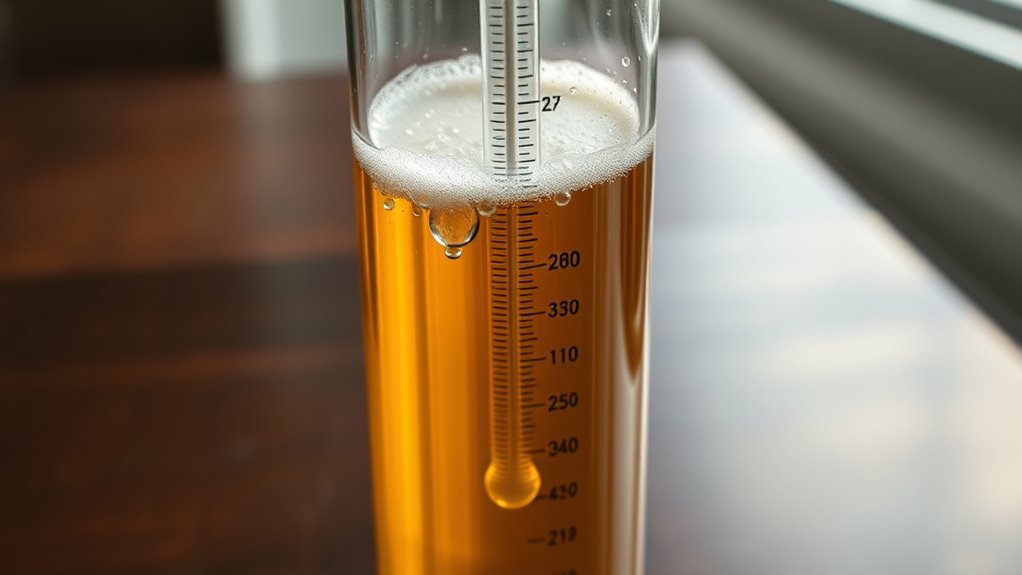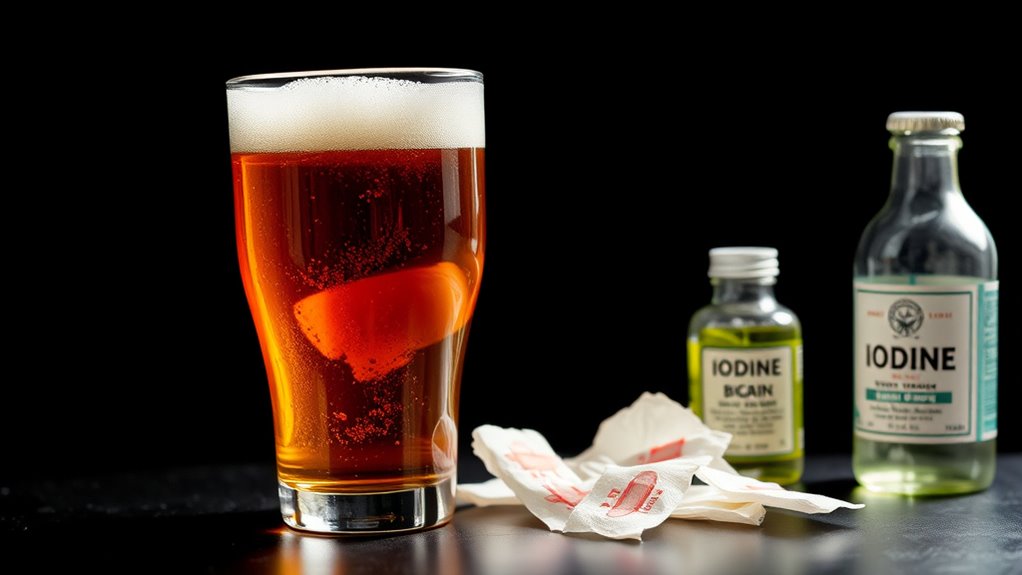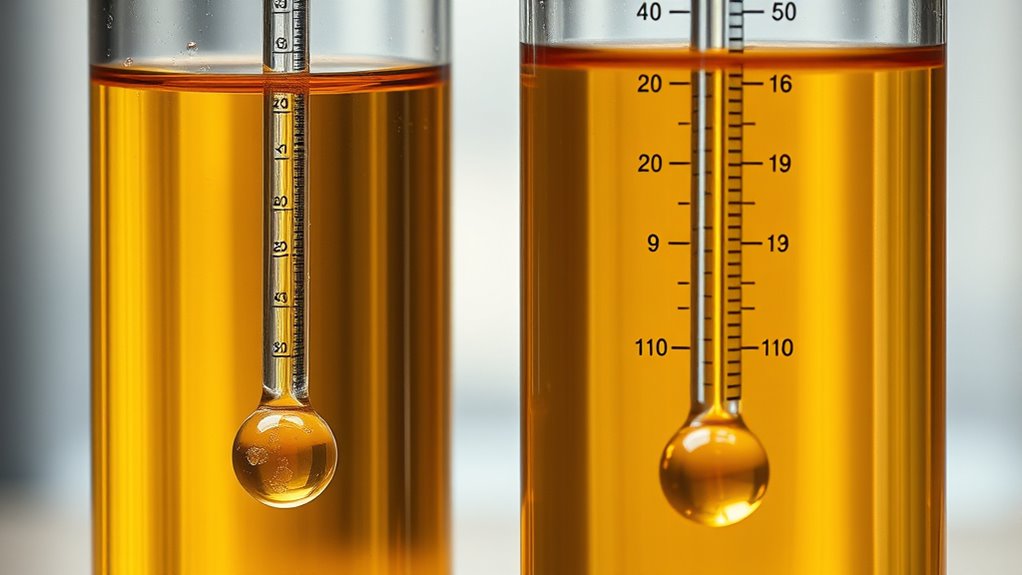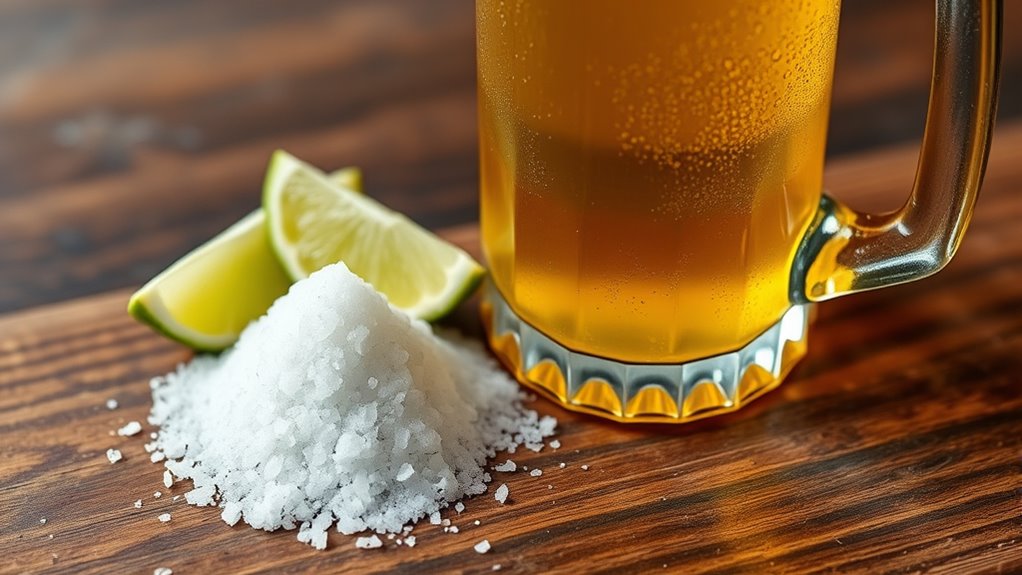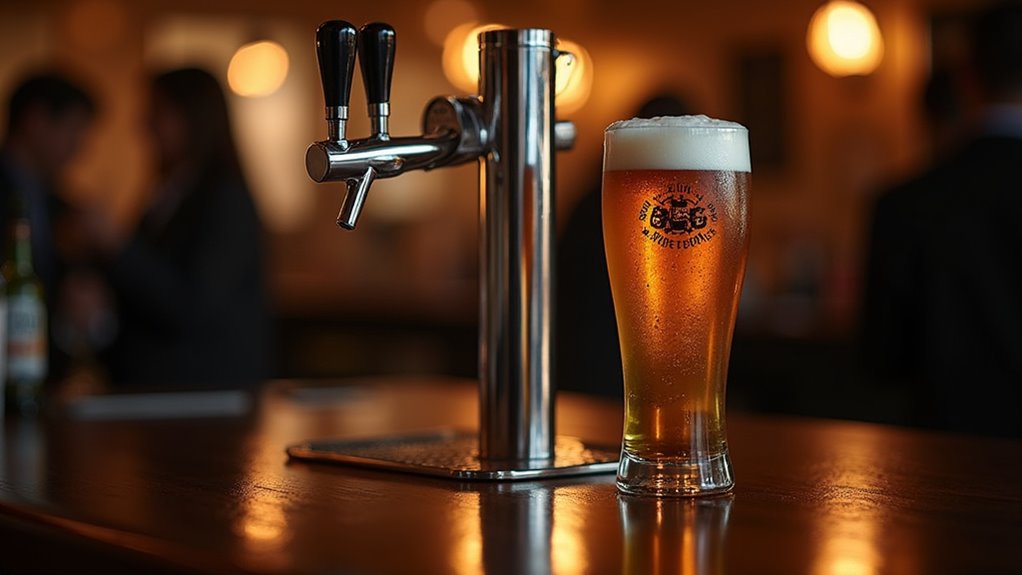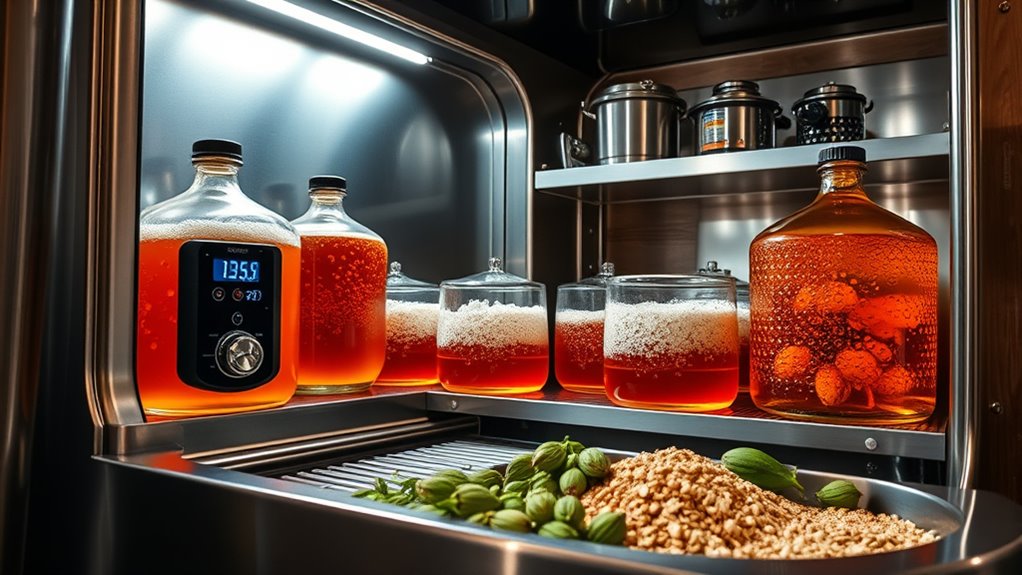To calculate beer alcohol using hydrometer readings, you need the Original Gravity (OG) and Final Gravity (FG). First, measure the OG before fermentation and the FG after fermentation. Then, use the formula: ABV = (OG – FG) * 131.25. Make certain to read the hydrometer correctly, accounting for temperature adjustments. Helpful Hint: Keep your hydrometer clean and guarantee it floats freely in the sample. Understanding these steps will improve your brewing accuracy, and more details await you.
At a Glance
- Measure Original Gravity (OG) and Final Gravity (FG) using a sanitized hydrometer for accurate readings.
- Use the formula ABV = (OG – FG) * 131.25 to calculate alcohol by volume.
- Ensure the hydrometer floats freely in the sample to avoid skewed readings.
- Adjust readings for temperature based on the hydrometer’s calibration temperature for precision.
- Record hydrometer measurements at eye level from the bottom of the meniscus for accuracy.
Understanding Original Gravity (OG) and Final Gravity (FG)
Helpful Hints:
- Always check temperature calibration for accuracy.
- Track OG and FG carefully during fermentation.
- Keep records of your hydrometer readings for future reference.
- Understanding the importance of Original Gravity and Final Gravity can enhance your brewing accuracy.
The Role of the Hydrometer in Brewing
The hydrometer plays a fundamental role in brewing by providing critical measurements that help you understand the fermentation process. It measures specific gravity, indicating the density of your wort compared to water. This allows you to evaluate sugar content before and after fermentation.
With its three scales—Brix, specific gravity, and potential alcohol—it offers insights into each brewing stage. Accurate readings of Original Gravity (OG) and Final Gravity (FG) are essential for calculating alcohol by volume (ABV).
Remember, temperature corrections may be necessary, as liquid density can fluctuate, impacting your specific gravity measurements. Additionally, investing in high-quality hydrometer products can enhance your brewing precision and overall results.
Helpful Hints:
- Submerge the hydrometer without bubbles.
- Take readings at eye level.
Preparing for Hydrometer Readings
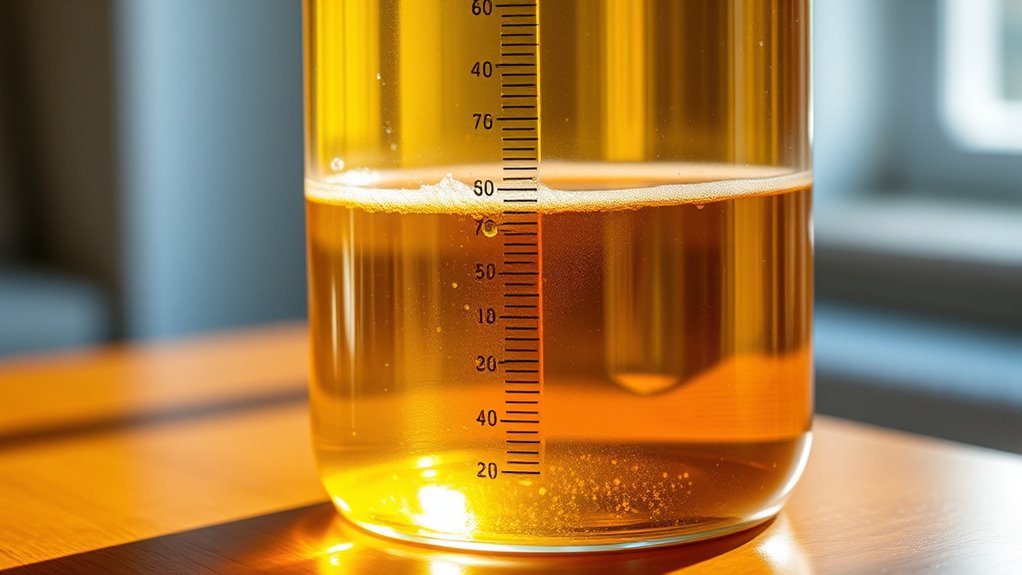
Preparing for hydrometer readings is essential for accurate measurements in the brewing process. Start by sanitizing all equipment, including your hydrometer and sample tube, to avoid contamination. Proper sanitization of brewing equipment is crucial to prevent any unwanted microorganisms from affecting your beer’s flavor.
Use a hydrometer calibrated for the specific temperature of your wort, typically 60°F or 68°F, for precise readings. Draw a small sample of wort, filling the test jar so the hydrometer can float freely without touching the sides.
Gently spin the hydrometer to eliminate surface bubbles that may affect your measurement. Record the specific gravity at the bottom of the meniscus, guaranteeing you’re at eye level for the most accurate reading.
Helpful Hints:
- Always sanitize your equipment.
- Calibrate hydrometers for accurate readings.
- Ascertain samples are free of bubbles.
Taking Accurate Hydrometer Measurements
Taking accurate hydrometer measurements is essential for determining the alcohol content of your brew, as even small inaccuracies can lead to significant discrepancies in your final product.
First, verify your hydrometer is sanitized and free from air bubbles. Fill a test jar with your wort or beer until the hydrometer floats freely, then gently spin it to remove any surface bubbles.
Ensure your hydrometer is sanitized and bubble-free by gently spinning it in a filled test jar for accurate readings.
Always read the measurement from the bottom of the meniscus at eye level. Remember, temperature can affect readings, so check the calibration temperature and apply corrections.
Record both the original gravity reading and final gravity readings for accurate ABV calculations.
Calculating Alcohol by Volume (ABV)
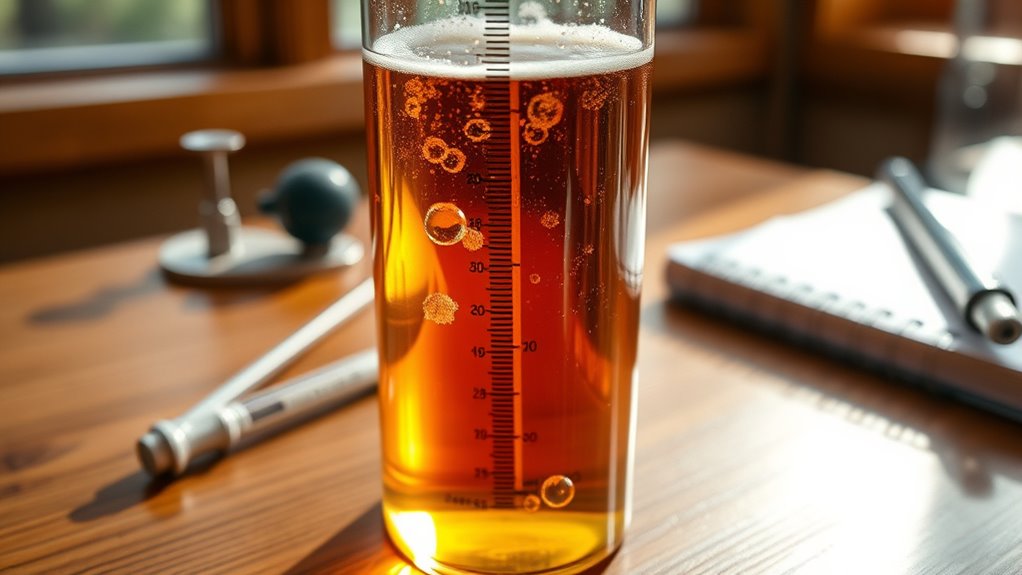
Calculating Alcohol by Volume (ABV) in your brew is an essential step that allows you to determine the strength of your beer accurately.
To find ABV, use the formula: ABV = (Original Gravity – Final Gravity) * 131.25. Measure the specific gravity before and after fermentation; for instance, if your original gravity is 1.054 and final gravity is 1.015, your ABV would be about 5.12%.
Keep in mind that non-fermentable sugars can skew final gravity readings. For precision, consider using online calculators, especially for higher alcohol content, as they might yield better results than manual calculations.
Importance of Temperature Corrections
When measuring specific gravity with a hydrometer, it’s essential to take into account the impact of temperature on your readings.
Temperature corrections guarantee accurate readings, as density changes can skew results. Here are key points to keep in mind:
- Most hydrometers are calibrated at 15°C or 20°C.
- Adjustments are needed for every 1°F deviation from calibration temperature.
- Use a temperature correction calculator to reflect true density.
- Inaccurate readings can affect alcohol by volume (ABV) calculations.
- Proper corrections help maintain fermentation quality and predictability. Additionally, maintaining a consistent temperature during fermentation is crucial for optimal yeast performance.
Common Mistakes in Hydrometer Usage
Accurate measurements are essential for brewing, and the hydrometer plays a key role in determining alcohol content.
To avoid common mistakes, make sure your hydrometer floats freely in the liquid, as touching the sides can skew readings. Always account for temperature adjustments, correcting your reading based on the calibration temperature.
Ensure your hydrometer floats freely and consider temperature adjustments for accurate readings.
When taking measurements, read at eye level from the bottom of the meniscus to avoid misinterpretation. Also, use a properly sanitized hydrometer to prevent contamination.
Finally, record both the original gravity and final gravity to calculate alcohol by volume accurately. These steps will enhance your brewing precision.
Alternative Methods for Measuring Alcohol Content
Measuring alcohol content in your brew doesn’t have to rely solely on hydrometers. Consider these alternative methods for accurate readings:
- Refractometer: Measures light refraction in wort samples.
- Brix Conversion: Multiply Brix by 0.59 to estimate potential alcohol content.
- Online Calculators: Use them cautiously for final gravity and ABV estimates.
- Temperature Adjustments: Guarantee accuracy for both hydrometers and refractometers, typically at 60°F and up to 85°F, respectively.
- Original and Final Gravity: Monitor these values throughout fermentation to estimate alcohol produced effectively.
These methods can enhance your brewing precision and provide innovative insights into your fermentation process. Utilizing a refractometer product can further streamline your measurements and improve accuracy.
